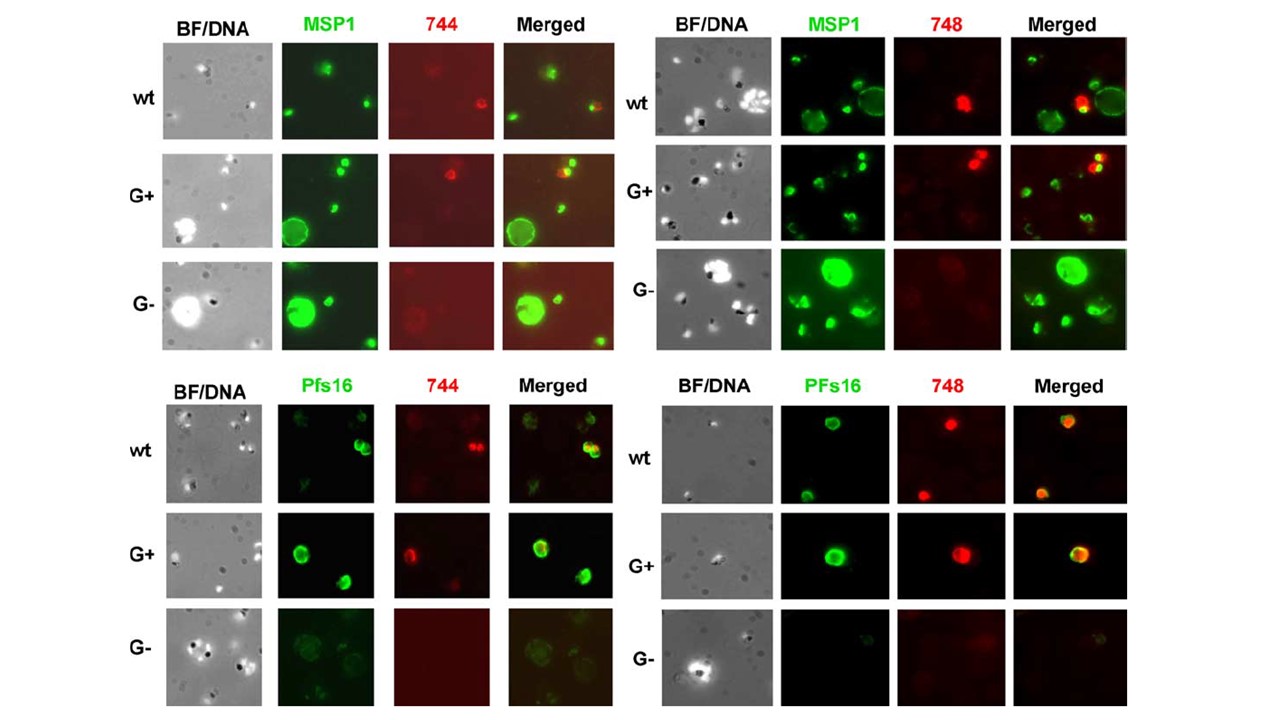Localization of Pfg14.744 and Pfg14.748 in ring stage parasites that are committed to gametocytogenesis. Parasites isolated from gametocyte cultures on day 6 were formaldehyde fixed and permeabilized with 0.1% saponin as described in Section 2. The parasites were then dual labeled with rabbit IgG antibodies generated against MSP1 (MR4/ATCC, Manassas, VA), a marker for all early stage parasites, or Pfs16, a marker for gametocytes, and mouse IgG antibodies generated against Pfg14.744 (744) or Pfg14.748 (748) followed by fluorescein isothiocyanate (FITC)-labeled anti-rabbit IgG and tetramethylrhodamine isothiocyanate (TRITC)-labeled anti-mouse IgG. The first panel in each set is a combined bright field and DAPI fluorescence image (BF/DNA) followed by the individual and merged images. The IFA pattern confirmed expression only in Pfs16 positive ring stage parasites, not all the merozoite surface protein 1, MSP1, positive ring stage parasites. This is consistent with expression of Pfg14.744 and Pfg14.748 in the subpopulation of the parasites that are committed to gametocytogenesis.
Eksi S, Haile Y, Furuya T, Ma L, Su X, Williamson KC. Identification of a subtelomeric gene family expressed during the asexual-sexual stage transition in Plasmodium falciparum. Mol Biochem Parasitol. 2005 Sep;143(1):90-9. PubMed PMID: 15996767.
Other associated proteins
| PFID | Formal Annotation |
|---|---|
| PF3D7_0930300 | merozoite surface protein 1 |
| PF3D7_1477300 | Plasmodium exported protein (PHIST), unknown function |
| PF3D7_1477700 | Plasmodium exported protein (PHISTa), unknown function |
